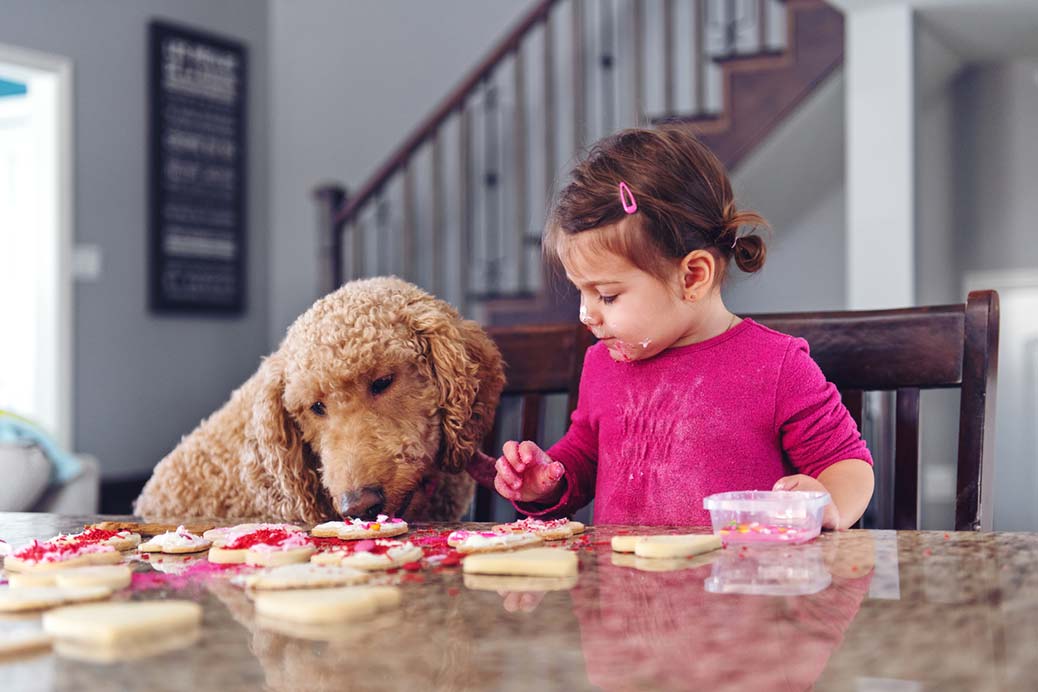Coco was a Standard Poodle I worked with several years ago. Spunky yet regal, Coco was a delight to her owners. She had excelled in her basic obedience class and was responsive in the home and community on a variety of commands. She was friendly with strangers and dogs alike and enjoyed the attention of the many people who couldn’t help but be drawn to meet her.
All of Coco’s calm and composure, however, went flying out the window as soon as she got into the car. Coco’s owners were active and wanted to share outings with Coco – to the park, friends’ houses, the pet store, the woods. Coco loved all of these outings as well, perhaps a little too much! As soon as she heard her owners’ car keys jingling, Coco began prancing like a stallion. By the time they were headed out the front door, she was whining and sprinting toward the car. Once she hopped in and they were headed down the driveway, things reached a fever pitch that was maintained all the way to their destination. Coco would fly from one side of the back seat to another, whimpering, yipping, pacing, and spinning like a whirling dervish. Once she arrived at her destination, she continued with some excitement for a few minutes but then quickly settled into her more typical calm self. The ride home was always a bit easier, because Coco was usually tired from her day’s activities and she would sit or stand in the backseat “without all of the histrionics”, as her owners put it.
Coco’s owners had tried to calm her by talking to her, putting baby blinds on the windows, and reprimanding her, all to no avail. They were finding themselves reluctant to take her with them because her behavior was so disrupting and distracting while they were driving.
To address Coco’s car antics, we began with the beginning and the end of the sequence. Because Coco so enjoyed her outings, it was clear that the arrival at the destination was rewarding the behavior that preceded it. If Coco was wild and spinning when she reached the woods, the wild spinning behavior was reinforced. So we worked first on teaching and rewarding calm, quiet behavior in the car before Coco was allowed to hop out at her destination. We built on Coco’s already solid response to obedience cues and her owners began to ask for a Sit/Stay in the back seat before they allowed Coco to hop out. We brought treats out as a reward for this over the first two or three outings but quickly Coco was responding reliably and we were able to reward her by simply starting her walk (that is, jumping out of the car was rewarding enough.)
On the way from the house to the car, we had Coco follow a Heel cue. She had already been taught to target her owner’s hand in exchange for praise and treats in her obedience class, so we cued this Heel all the way to the car, required a short Sit/Stay before she hopped in, and then asked for a Sit/Stay before we closed the door and climbed into the front seat.
Dog training while driving is like doing your taxes while skiing, so I had one of the owners climb into the back seat with Coco initially while the other owner drove. In this way, the training owner blocked one half of the back seat, preventing Coco from easily spinning end to end, and also was there to cue some Sit/Stays. Here, treats were required to reward the behavior and maintain her focus. The competing excitement of passing sights and sounds was too distracting for Coco to focus for praise and petting alone. Over time we built longer Sit/Stays until the owners could drive for up to 30 minutes with Coco earning a treat about once every five minutes for sitting calmly in the back seat.
I then had the training owner move into the front seat, but position himself such that he could continue to cue Coco’s now blossoming Sit/Stay response in the back seat. She was unable to perform a Sit/Stay for him when he had tried this in the past but because we had taken the time to build her response first with him in the back seat to facilitate it, Coco was now better able to stay in her Sit for longer periods even while alone in the back seat. Within three months, Coco’s owners could drive to all of their local destinations with Coco much more calm and controlled in the car. For longer drives, they brought a special marrow bone she never got otherwise, and this held her attention for up to 45 minutes at a time without any intervention on their part. Happily, Coco could now fully share in her family’s activities without being a driving distraction!







